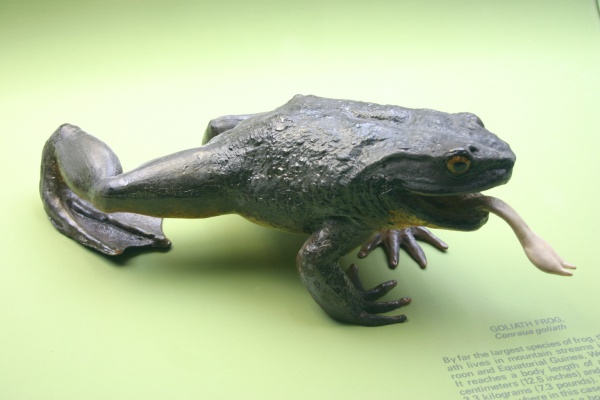Facts About Giant Slippery Frog
The Goliath frog, also known as the Goliath bullfrog or giant slippery frog, holds the distinction of being the largest frog on the planet. Some of these remarkable amphibians can grow up to 32 centimeters in length and weigh as much as 3.25 kilograms. Their primary habitats are in Cameroon and Equatorial Guinea, although these areas are increasingly threatened by human activities such as deforestation and over-collection for food and the pet trade.
These frogs are easily recognizable by their bumpy skin, greenish-brown backs, and yellow or orange bellies. They prefer fast-flowing rivers with sandy bottoms, usually located in dense, humid regions with high temperatures. While they spend most of their time in the water, they occasionally venture onto land at night.
Interestingly, Goliath frogs lack vocal sacs, so they don't produce the typical mating calls associated with other frogs. They lay their eggs in nests near or in rivers, with adults keeping watch over the nests during the night. The tadpoles are herbivorous, feeding on a specific type of aquatic plant, whereas the adults have a more varied diet that includes insects, spiders, and even small vertebrates.
Unfortunately, Goliath frogs are facing significant threats. They are hunted for food, and their habitats are being destroyed or degraded. Conservation efforts are essential to ensure sustainable hunting practices and the protection of their natural environments. Although some Goliath frogs are kept in captivity, successful breeding in such conditions has not yet been achieved. Due to their endangered status, the export of these frogs for the pet trade is strictly regulated. The government of Equatorial Guinea, for instance, limits annual exports to just 300 individuals.

 Cameroon
Cameroon